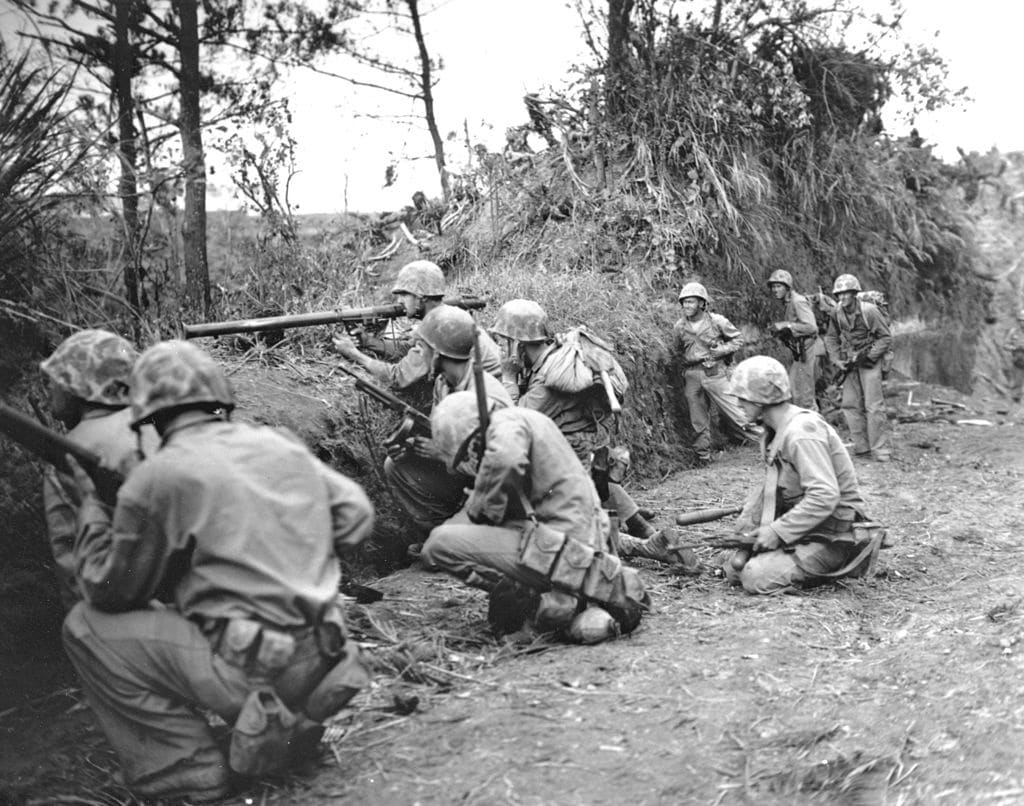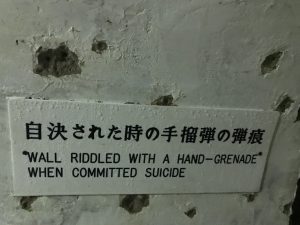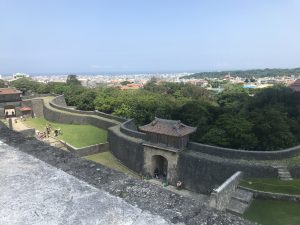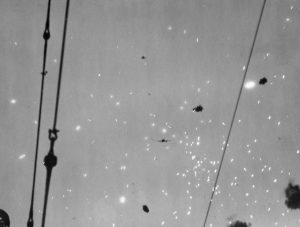But why was this tiny, beautiful island so important? And why was so battle so bloody that it lead to one of the most controversial decisions that would shape Global politics for decades to come?
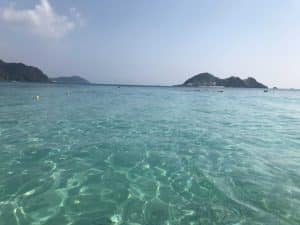
The beach at Tokashiki Island of the coast of Okinawa. Copyright: iluvhistory.com
Okinawa – the strategic airstrip
The island of Okinawa used to be the main island of Ryukyu kingdom until Japan annexed the entire Ryukyu archipelago. It is now the 5th largest of Japanese islands and is known for the nice climate, good food, the longevity of its native Okinawans and of course: Karate.
The position of Okinawa to the south within striking distance of the mainland made it essential for the airbases and anchorages needed to support the planned invasion of Japan, codenamed Operation Downfall. Also, it would make it possible to block important logistical routes, denying Japan vital supplies for the war effort.
As a result the American Tenth army launched the largest amphibious assault in the Pacific Theater of the war to catch Okinawa and the surrounding smaller islands. The operation was codenamed ICEBERG.
The bloody battle
The Japanese forces on Okinawa consisted of 67.000 regular soldiers and 9000 Imperial Japanese navy troops. They were supported by 39.000 drafted Okinawans. Facing them were the might of the US Army with 103.000 soldiers, 88.000 marines and 18.000 navy personnel. It would seem the odds were stacked heavily against the Japanese. But they were certainly no walkover and the Battle of Okinawa turned out to be one the bloodiest battles of Pacific Theater with an estimated 50,000 Allied casualties and another 38,000 wounded, along with an estimated 110,000 Japanese soldiers killed.
Here are 11 reasons why:
- Large number of troops:
The Battle of Okinawa was one of the largest land battles of the Pacific Theater of World War II. The massive size of the opposing forces, led to a significant escalation of the fighting. The size of the forces on both sides, coupled with the density of the population on the island, made it difficult for either side to maneuver effectively and contributed to the prolonged and bloody nature of the battle. - Intense fighting:
The Battle of Okinawa was marked by intense fighting and close-quarter combat. The Japanese soldiers were highly skilled in hand-to-hand combat and used a range of tactics to make it difficult for the Americans to advance. The Americans, in turn, were forced to engage in brutal and often deadly fighting to dislodge the Japanese from their positions.The grenade riddled wall from a suicide in an underground bunker on Okinawa. Copyright: iluvhistory.com
- Japanese resistance:
Japanese soldiers and some civilians on Okinawa were highly motivated and fiercely loyal to their emperor, which led to intense resistance and a willingness to fight to the death. The Japanese military doctrine emphasized the idea of “death before surrender,” and many Japanese soldiers committed suicide rather than surrendering.The view from Shuri Castle in Naha. The Japanese defences were centered around the castle and held off American assaults until they were shelled for 3 days by USS Mississippi. Copyright: iluvhistory.com
- Defensive fortifications:
The Japanese had built extensive defensive fortifications, including underground tunnels, caves, and bunkers, which made it difficult for the Americans to root them out. The fortifications were designed to provide cover and concealment for the Japanese soldiers and allowed them to move troops and supplies without being detected. - Terrain:
The mountainous terrain of Okinawa made it difficult for both sides to maneuver and created many natural fortifications that had to be overcome through costly assaults. The terrain made it difficult to bring in supplies and evacuate wounded soldiers, which contributed to the high casualty rates on both sides. - Pre-battle bombardment:
In the days leading up to the invasion, the American forces subjected Okinawa to a massive bombardment that destroyed much of the island’s infrastructure and caused an estimated 12,000 Okinawan civilian casualties.Kamikaze Attack on USS New Mexico 12 May 1945, Hagushi Bay, Yomitan, Okinawa. United States Navy unidentified personnel, Public domain, via Wikimedia Commons
- Kamikaze attacks:
The Japanese employed kamikaze attacks, with suicide pilots deliberately crashing their planes into American ships, which sank 36 American ships and damaged 368 others, killing an estimated 4,900 sailors. - Civilians caught in the crossfire:
The battle took a heavy toll on Okinawa’s civilian population, many of whom were caught in the crossfire or forced to participate in the fighting. The American forces had difficulty distinguishing between civilians and combatants, and often treated civilians with suspicion and hostility. The Japanese also used civilians as human shields, which made it difficult for the American forces to advance without causing civilian casualties. - Food shortage, suspected collaboration and forced suicide:
The civilian population was also subjected to shortages of food, water, and medical supplies, which led to widespread suffering and disease. In addition to using civilians as human shields, the Japanese military also committed numerous atrocities against the civilian population. Many Okinawan civilians were executed by the Japanese military for suspected collaboration with the Americans or for refusing to obey their orders. In some cases, civilians were forced to commit suicide by Japanese soldiers, who claimed that this was a more honourable way to die than to be captured by the enemy. It is estimated that as many as 150,000 Okinawan civilians were killed during the battle, accounting for more than a third of the island’s population at the time.
- Weather conditions:
The Battle of Okinawa took place during the spring rainy season, which made conditions on the island extremely difficult for both sides. The heavy rain and mud made it difficult to move troops and supplies, and also made it difficult for the Americans to establish effective defensive positions. - Lack of supplies:
Both sides faced significant challenges in terms of supplies and logistics. The American forces often had to rely on precarious supply lines, while the Japanese faced shortages of food, water, and ammunition. According to the United States Army Center of Military History, the logistical challenges facing the American forces were compounded by the difficulty of landing supplies on Okinawa’s beaches, which were often under heavy fire. - The stakes:
The Battle of Okinawa was seen as a crucial step towards the eventual invasion of the Japanese home islands, which raised the stakes and led to a greater willingness to engage in brutal and costly fighting.
The atomic bomb
According to the United States Army Center of Military History, the high casualties sustained by the American forces during the Battle of Okinawa played a role in the decision to use atomic bombs against Japan to bring an end to the war.
The experiences from the Battle Okinawa were hard won and concerns were mounting as to the projected casualties for the invasion of mainland Japan. It was estimated that the Japanese leaderships willingness to fight to the last man would result in a gigantic loss of life on both sides. Maybe as much as 400-800.000 American and 5-10 million Japanese deaths.
These numbers were deemed unacceptable and were one of the deciding factors why President Truman gave the use of the Atomic Bomb on Japan the green light.

